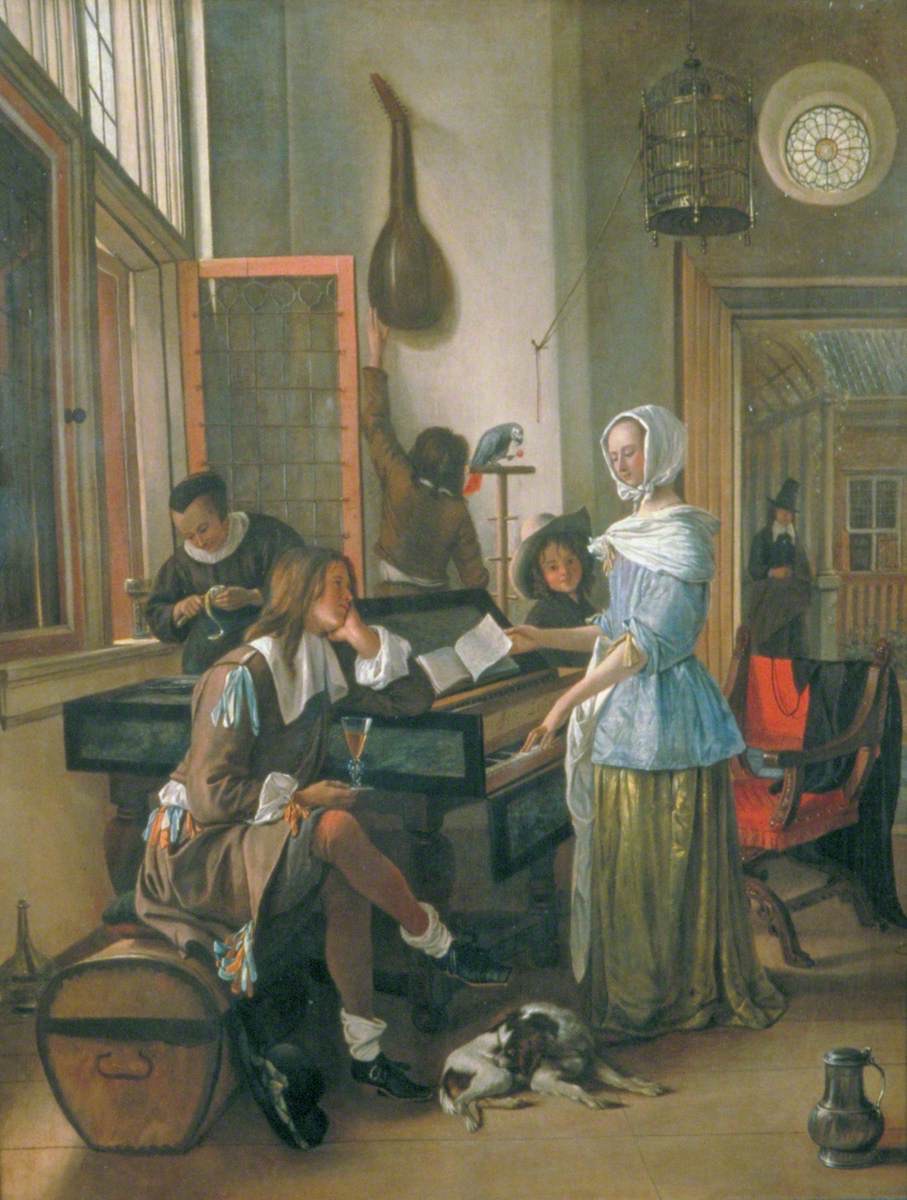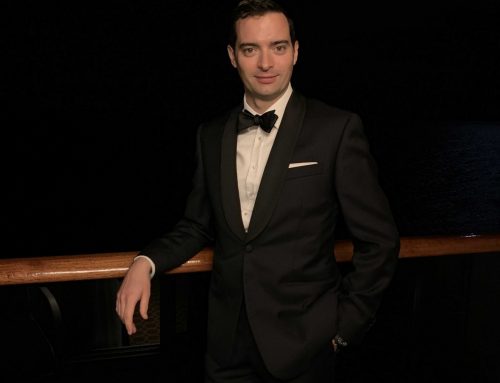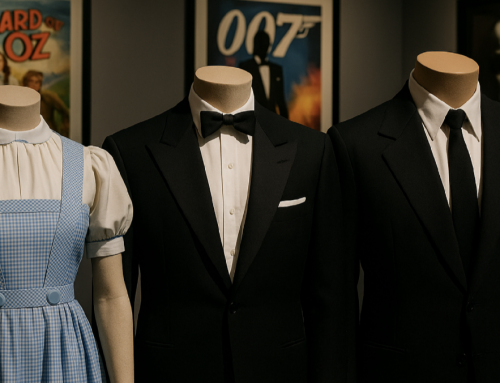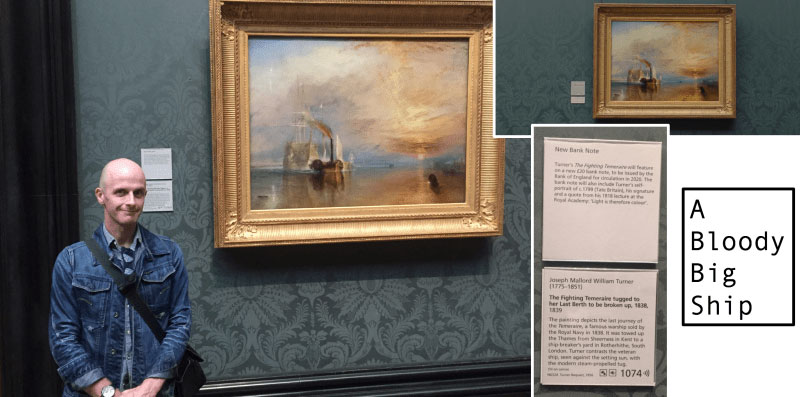
by Matthew Gibbs, aka @commanderbond_007
I, like many others, have found myself watching a James Bond film over the years keeping a keen eye (or ear) out for references to previous entries in the series’ history. We all have a thing for recurring villains, henchmen, locations, cars, women, watches, even the signature “shaken not stirred”’s! Recently I have found myself paying greater attention to props and artworks used on set and location.
This prompted the question, which artefacts and artworks pop-up across multiple films and multiple ‘eras’ of Bond actors? I wanted to delve a little deeper into the paintings specifically and commenced my own little mission dubbed From Paint Strokes with Love.
Whilst many used on-screen are props or reproductions, I wanted to uncover a little more about the background of the originals of some of the recurring artworks. This article gives a little more detail on my favourite (00)7 artworks throughout the James Bond series.
Artwork 1
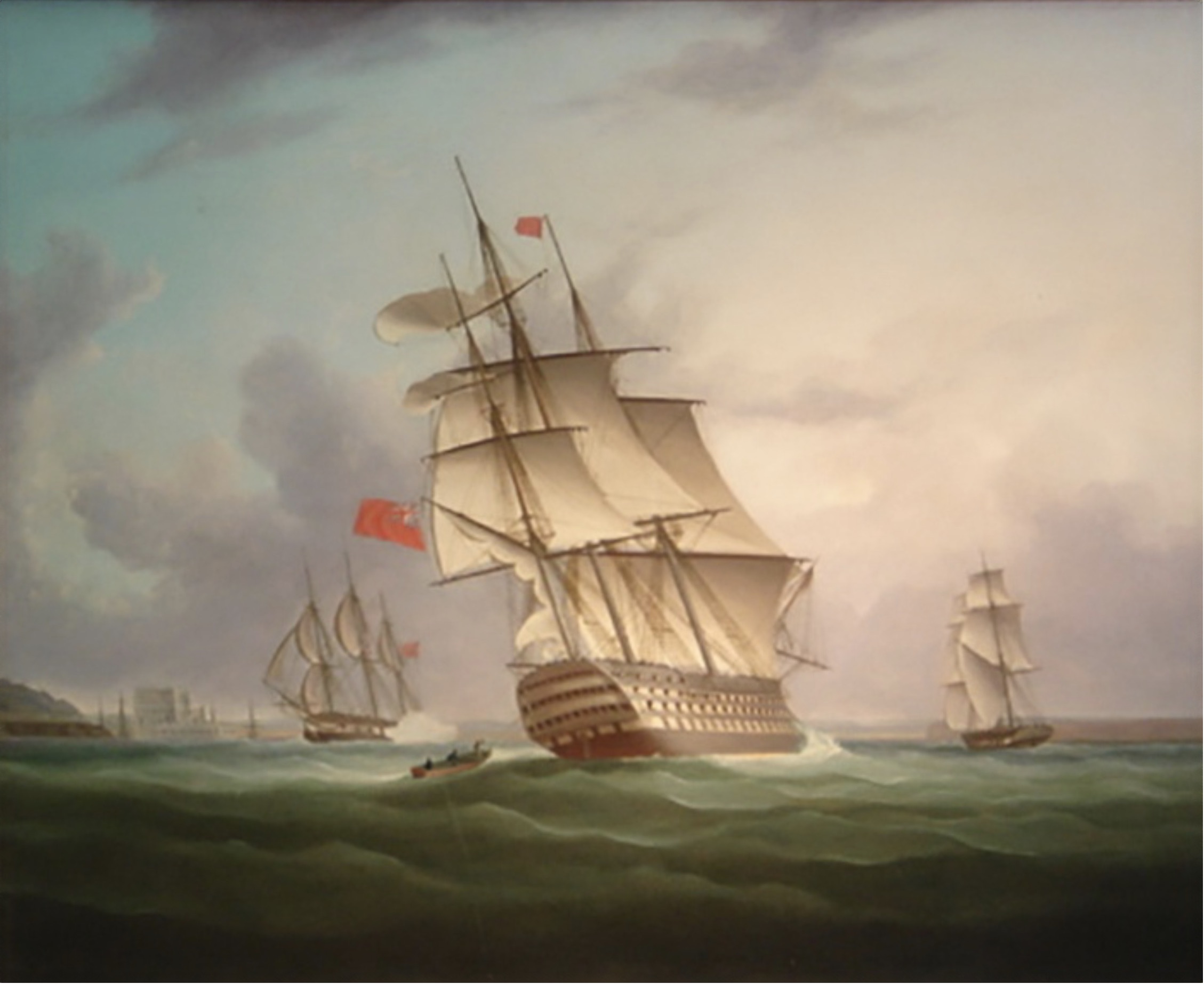 19th Century Seascape With Three Ships Off The Coast
19th Century Seascape With Three Ships Off The Coast
Thomas Buttersworth (1768 – 1842)
The most prolific painting to appear across the series. Buttersworth was a British marine painter renowned for his detailed and vivid depictions of naval scenes during the Napoleonic Wars. His works, characterised by precise ship details and dramatic seascapes, gained popularity in the early 19th century.We first see this painting hanging in M’s office in Dr. No (1962).
It continues to adorn the walls of M’s office, normally above the fireplace, in On Her Majesty’s Secret Service (1969), The Man with the Golden Gun (1974), For Your Eyes Only (1981), Octopussy (1983), A View to a Kill (1985), The Living Daylights (1987) and, after a hiatus spanning over thirty years, the painting reappears in M’s office in No Time to Die (2021). Quite fitting given M was a Vice Admiral in the Royal Navy before joining MI6.
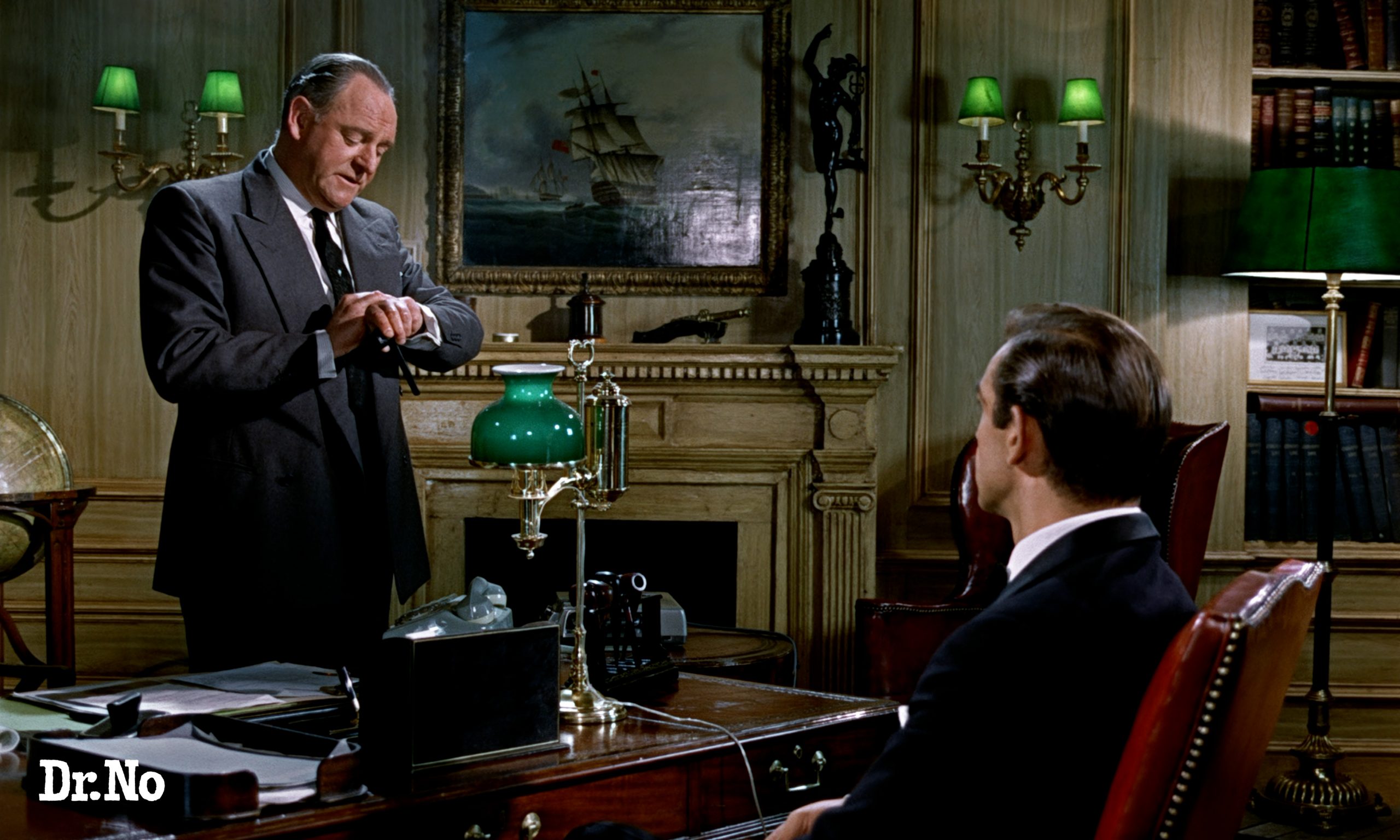 Buttersworth’s seascape appearing in Dr. No (1962)
Buttersworth’s seascape appearing in Dr. No (1962)
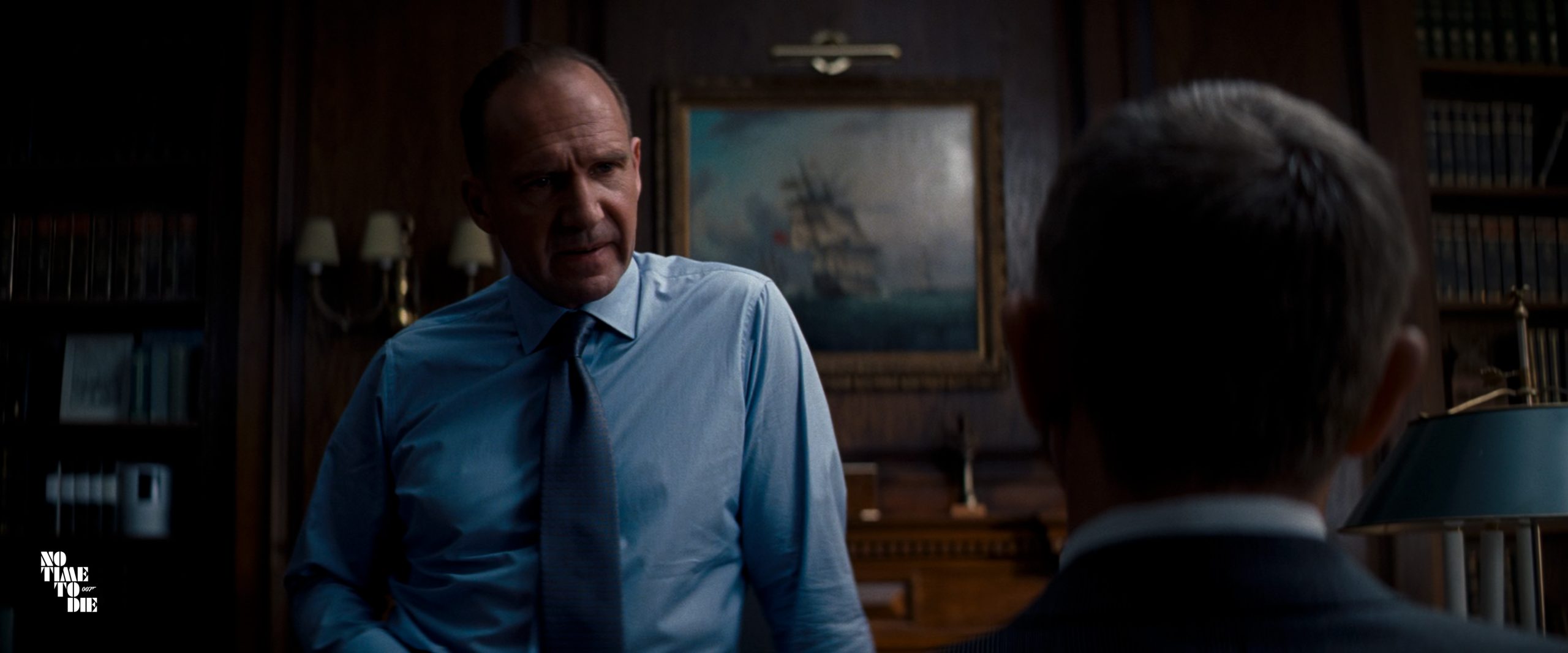 Buttersworth’s seascape appearing in No Time to Die (2021)
Buttersworth’s seascape appearing in No Time to Die (2021)
The painting also appears in Live and Let Die (1973), however on his occasion it hangs in 007’s home in the opening scenes following the pre-title sequence. Maybe M recognises it, and quite rightly, takes repossession for all subsequent films in which it appears.
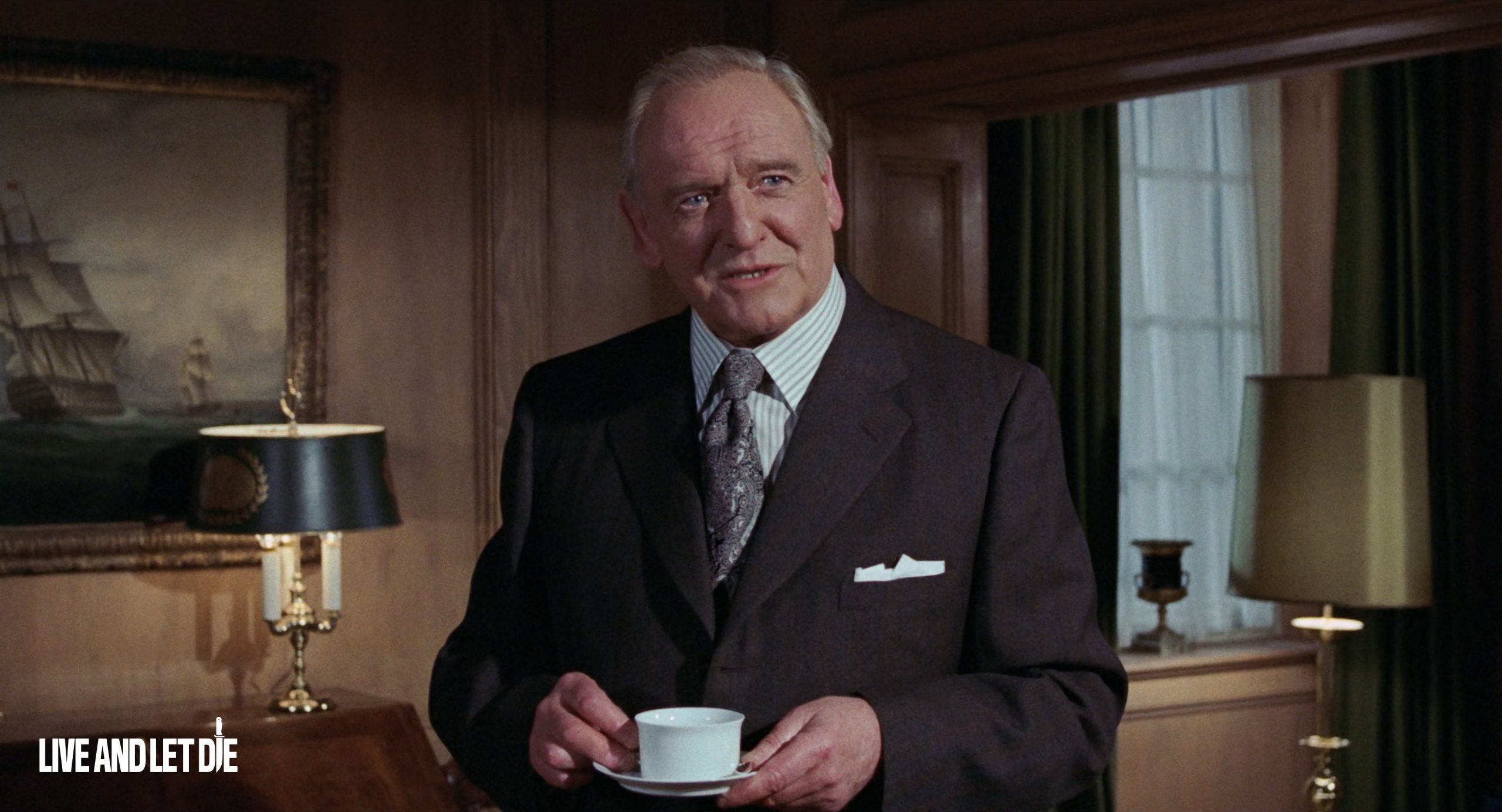 Buttersworth’s seascape appearing in Live and Let Die (1973)
Buttersworth’s seascape appearing in Live and Let Die (1973)
Disappointingly, it does not appear in any of the Pierce Brosnan films to complete the set. The set decoration for M’s office was very different in this era and it was only really following the fictitious destruction of the SIS Buildng in Skyfall that M’s office returned to a Whitehall setting. Alas, an interesting Brosnan-era recurrence will come later in the article.Another Buttersworth seascape, this time depicting the Battle of Trafalgar, appears across the final three Daniel Craig-era films.
Artwork 2
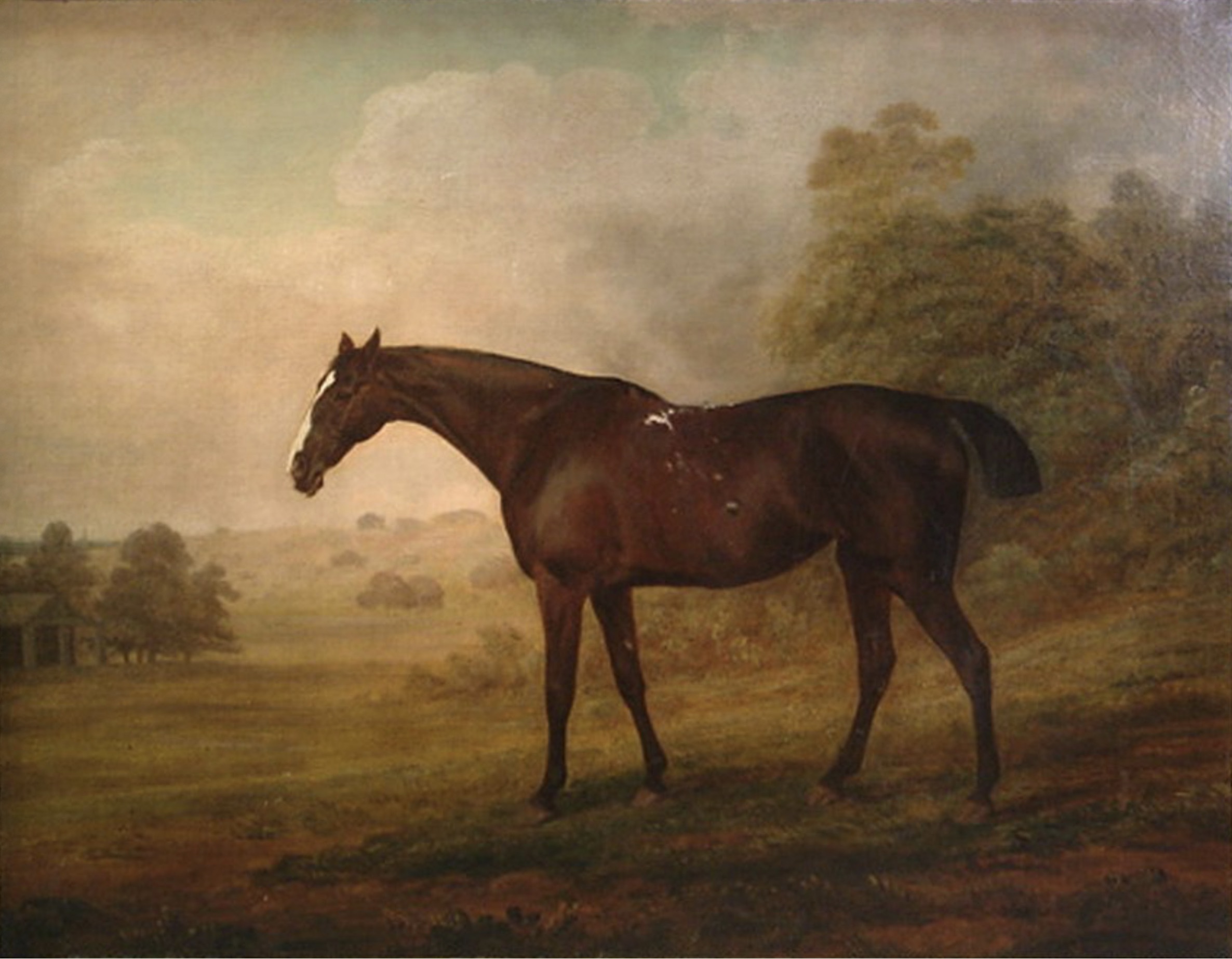
19th Century Bay Horse With A White Spot On Its Back Possibly
John Boultbee (1753–1812)
Whilst unconfirmed, the painting looks very similar in style to those produced by English artist John Boultbee (1753–1812), a painter of equestrian and other sporting subjects.Active in the late 18th century, Boultbee gained recognition for his accurate and detailed portrayals of horses in various settings, capturing the spirit and beauty of these animals. His artworks are prized for their realism and historical significance.
Alongside the Buttersworth, this painting is significant in that it appears in both the very first and most recent entries in the series, however in very different circumstances. This painting appears early in Dr. No (1962). Before we even get our very first “Bond… James Bond” we see this painting hanging on the wall at the entrance to the Le Cercle casino hall inside Les Ambassadeurs Club. It can be seen over the shoulder of the casino clerk who delivers the message to 007 as he is playing baccarat with Sylvia Trench.
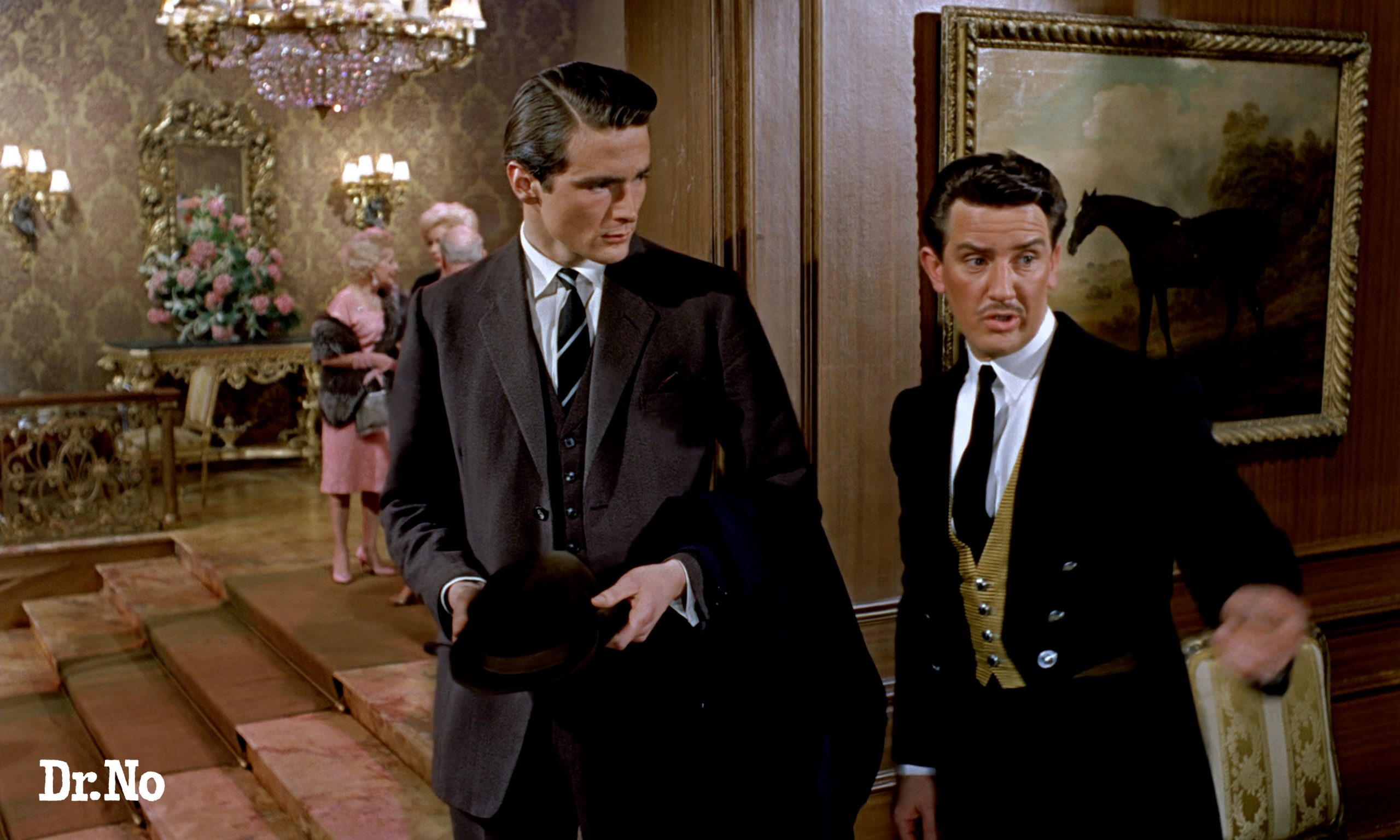 Bay Horse painting in Dr. No (1962)
Bay Horse painting in Dr. No (1962)
The same painting is then visible in 007’s apartment in SPECTRE (2015). The painting is leant against the wall, rather than hanging, so it is probably fair to assume it as being amongst 007’s possessions placed into storage upon his ‘death’ in Skyfall (2012). The painting is only visible for a brief moment as Bond and Moneypenny enter his apartment.
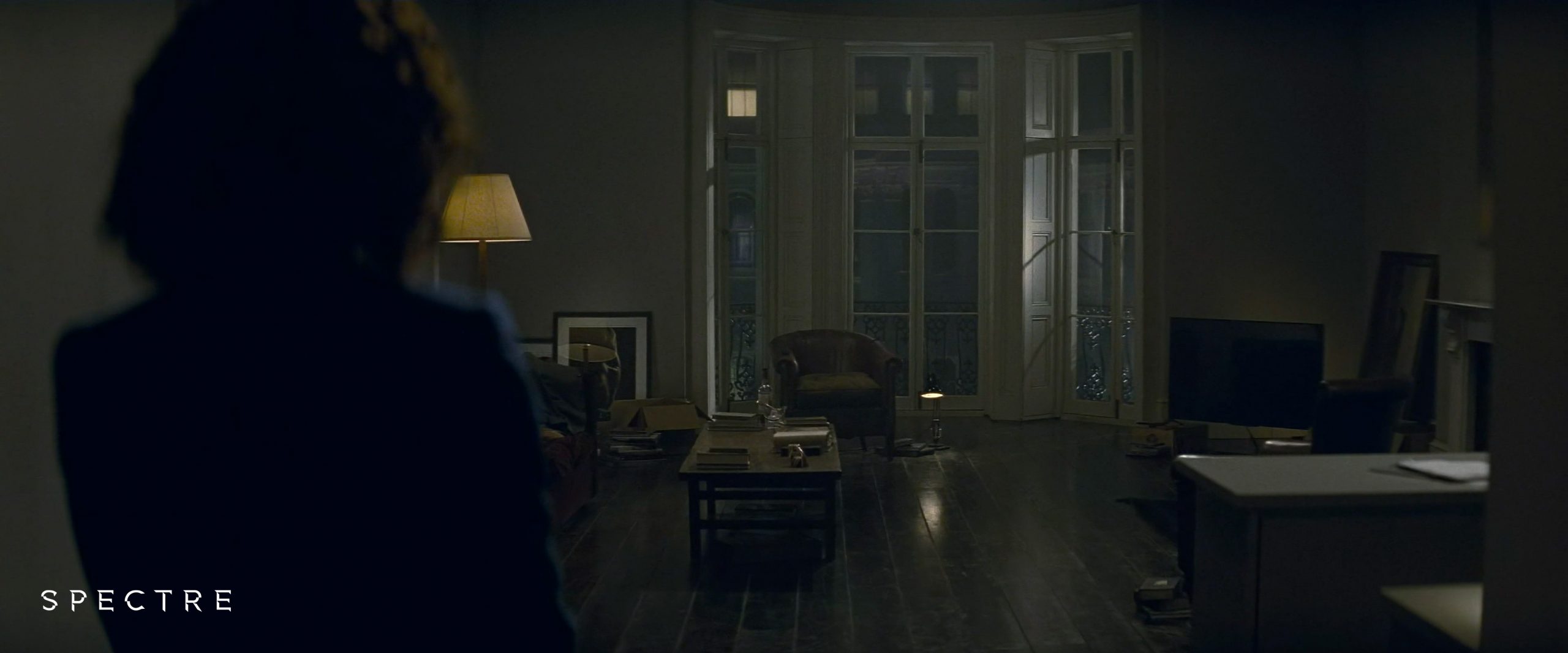 Bay Horse painting in SPECTRE (2015)
Bay Horse painting in SPECTRE (2015)
It is not long before it finds its way back in storage, presumably placed there as Bond and Madeline leave London in the final scene of the film. It is seen in the background of the storage garage in No Time to Die (2021) when 007 uncovers his Aston Martin V8 Vantage before heading off down to Whitehall to see M.
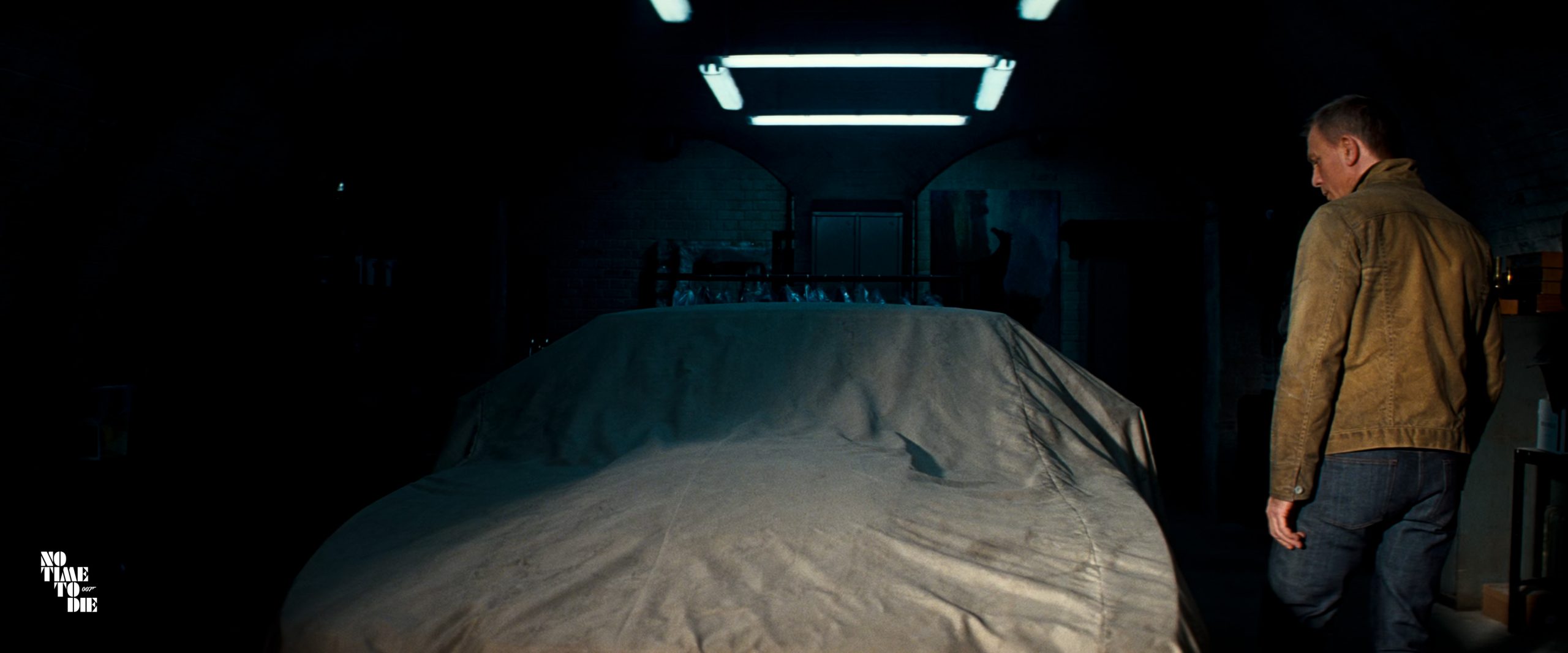 Bay Horse painting in No Time to Die (2021)
Bay Horse painting in No Time to Die (2021)
Artwork 3
The Musical Company
Jan Steen (c.1625 – 1679)
Staying with Dr. No for the third time, this painting by Dutch Golden Age artist Jan Steen, was believed to have been created around 1665-1668. Jan Steen was known for his genre paintings, which often depicted scenes of everyday life in 17th-century Dutch society.
The Musical Company is a fine example of his humorous and lively style.In this particular painting, Steen portrays a domestic scene set in a well-appointed interior. A group of people are engaged in making music. The central focus is on a woman playing a virginal, a small keyboard instrument similar to a harpsichord.
Other figures in the painting are shown singing, playing various instruments, and enjoying the music.We first see this painting hanging in Dr. Julius No’s lair toward the end of the film, shortly after 007 recognises the stolen Goya portrait of the Duke of Wellington.
The painting is visible on the far wall as 007, Dr. No and Honey Ryder all sit down to eat.
 The Musical Company visible in the background of Dr. No (1962)
The Musical Company visible in the background of Dr. No (1962)
The painting then reappears in Connery’s last EON-produced Bond outing, 1971’s Diamonds Are Forever. The painting has somehow swapped the Caribbean for the Canals of Amsterdam, Netherlands, where it now adorns a wall of Tiffany Chase’s apartment.
 The Musical Company appearing in Diamonds Are Forever (1971)
The Musical Company appearing in Diamonds Are Forever (1971)
The original painting, from which the reproduction used in both films is based, forms part of the permanent Harold Samuel Collection in Mansion House, City of London.
Artwork 4
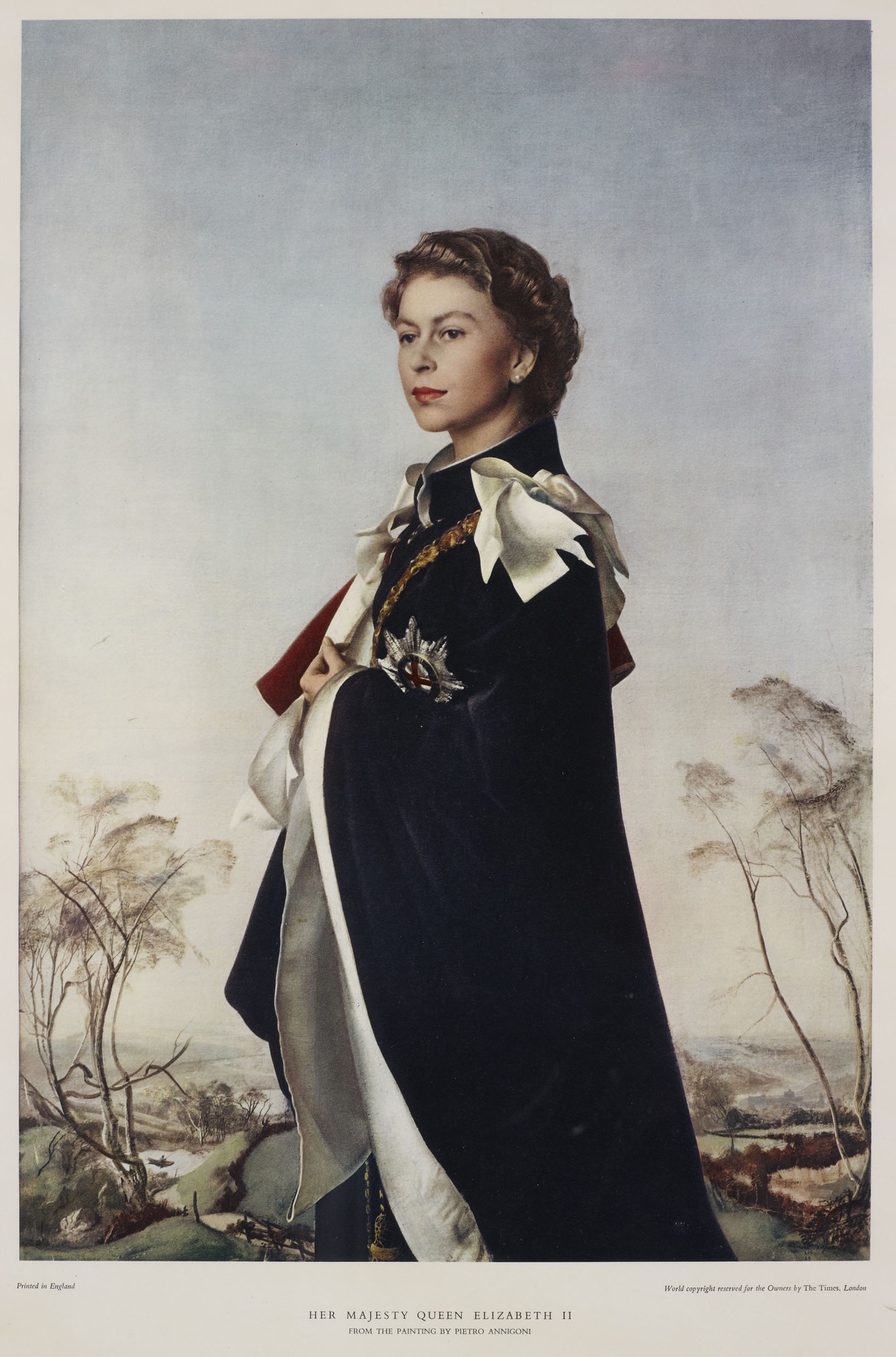
Queen Elizabeth II
Pietro Annigoni (1955)
The portrait, characterised by its realism and emotional depth, remains one of the most celebrated depictions of Queen Elizabeth II, symbolising a timeless representation of the monarch.The painting was commissioned by the City of London livery company, the Worshipful Company of Fishmongers. It was first displayed in 1955 and later loaned by the Fishmonger’s Company in 1958 and 1986 before the National Portrait Gallery’s 2012 exhibition.
It is displayed at their livery hall, Fishmongers’ Hall, adjacent to London Bridge.Whilst the original portrait is never used on-screen, prints of the portrait can be seen throughout a few films; beginning with On Her Majesty’s Secret Service (1969). 007 offers an apologetic “sorry ma’am” to the print as he is clearing his belongings from his office following his ‘resignation’ from MI6.
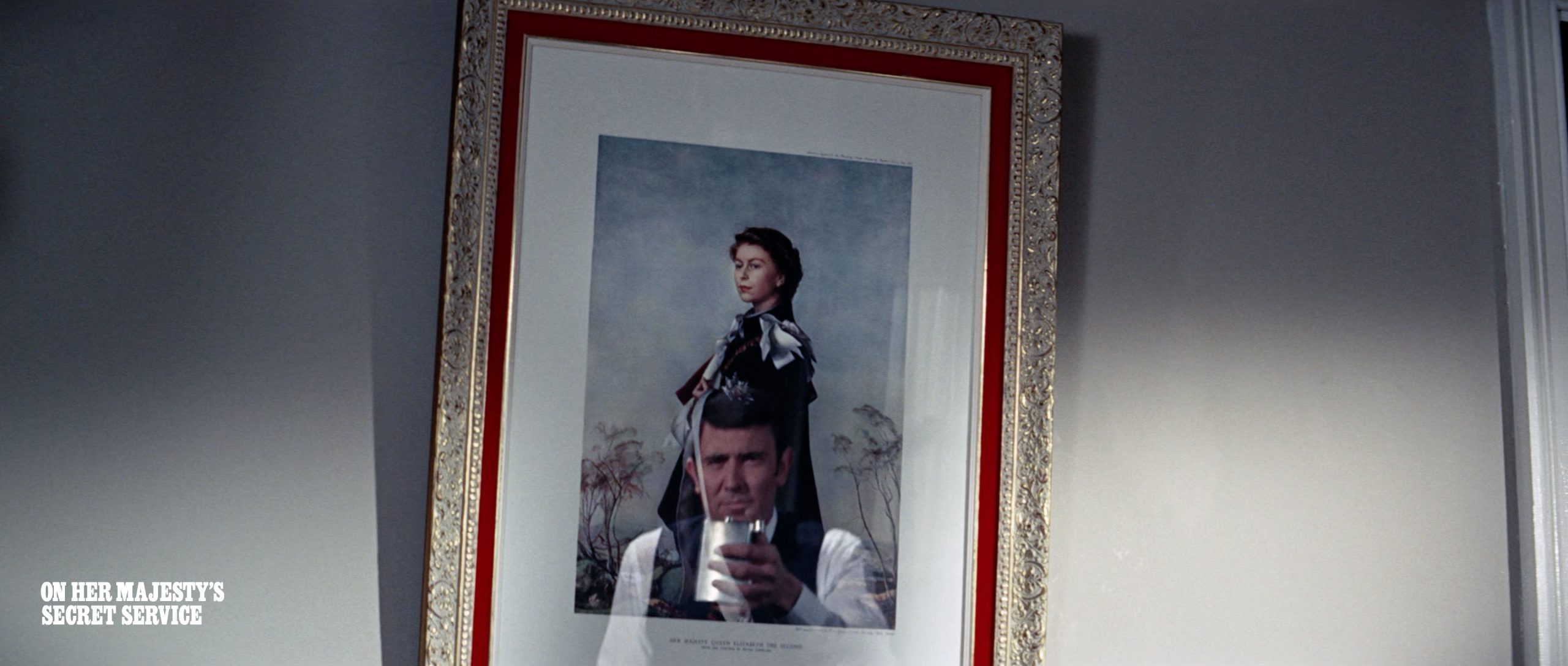 Queen Elizabeth II portrait in On Her Majesty’s Secret Service (1969)
Queen Elizabeth II portrait in On Her Majesty’s Secret Service (1969)
Slight variants of the portrait go on to make subsequent appearances in The Man with the Golden Gun (1974) and finally in A View to a Kill (1985) where it is seen on both occasions hanging in within Moneypenny’s office, albeit in different locations.
 Queen Elizabeth II portrait in A View to a Kill (1985)
Queen Elizabeth II portrait in A View to a Kill (1985)Artwork 5

Portrait of C P Villiers
Arthur Stockdale Cope (c.1885)
The Reform Club is a members only club in London and was founded in 1836 as a gentlemen’s club dedicated to promoting political and social reform.The iconic Palladian-style building on Pall Mall, designed by architect Sir Charles Barry, opened its doors in 1841 and has since played a significant role in British political and social history, maintaining its reputation as an influential and exclusive institution.
C P Villiers was a prominent early member of the club, as was Thomas Babington Macaulay whose portrait hangs on the opposite side of the staircase.The club itself appears in two films across the series; Die Another Day (2002) and Quantum of Solace (2008). On each occasion the club doubles for a different institution.
Firstly in Die Another Day, the club’s Italianate Saloon poses as a fencing club where Bond meets Madonna’s Verity for a fencing lesson. In the same scene 007 duels Gustav Graves “the old fashioned way” in competition for one of his conflict diamonds. Following Bond being the first to draw blood from the torso, Graves suggests they “settle downstairs”, where we see 007 walk past the portrait.
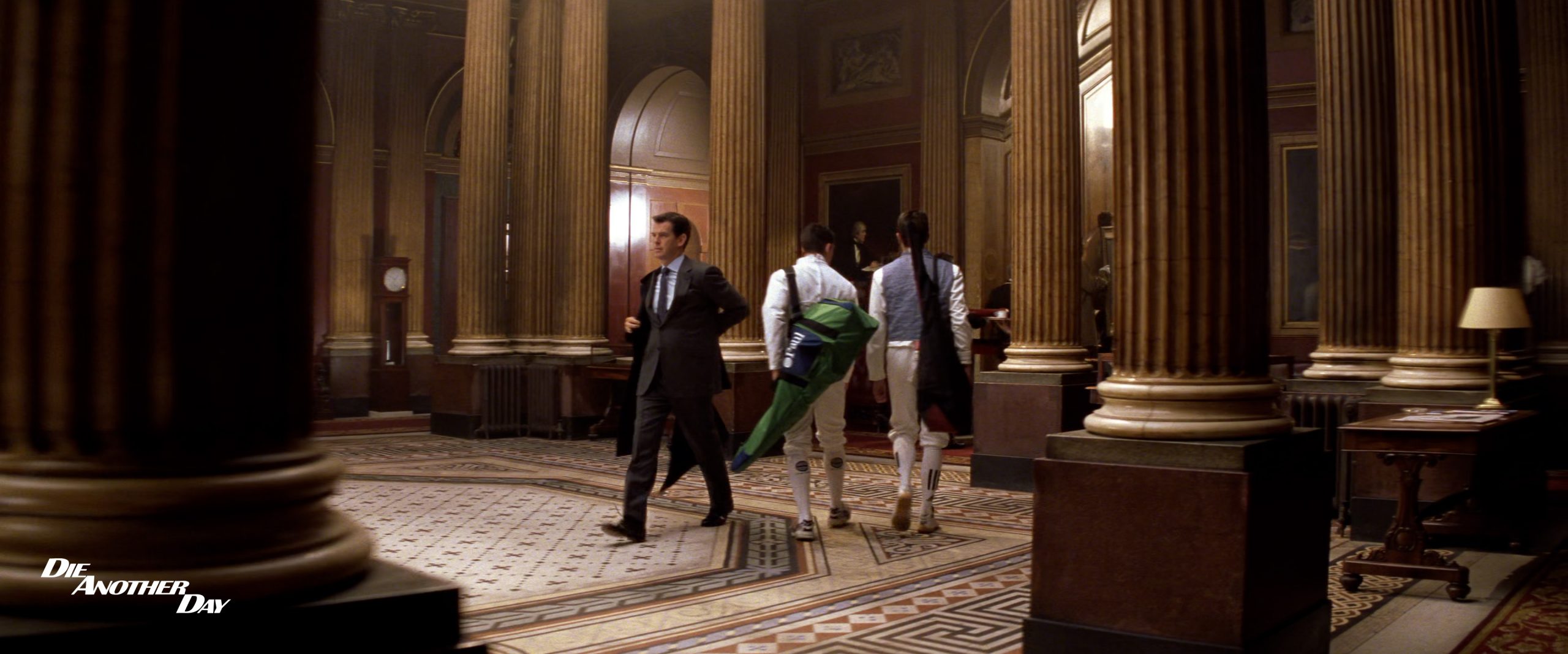 Portrait of C P Villiers portrait in Die Another Day (2002)
Portrait of C P Villiers portrait in Die Another Day (2002)
Six years later, the club is back on our screens, only this time M is on her way to meet the Foreign Secretary to discuss Quantum, Dominic Greene and the prospective acquisition of oil in an upstairs office. No flying swords or ripped canvases this time round; Tanner and M walk past the same painting before parting ways in the atrium.
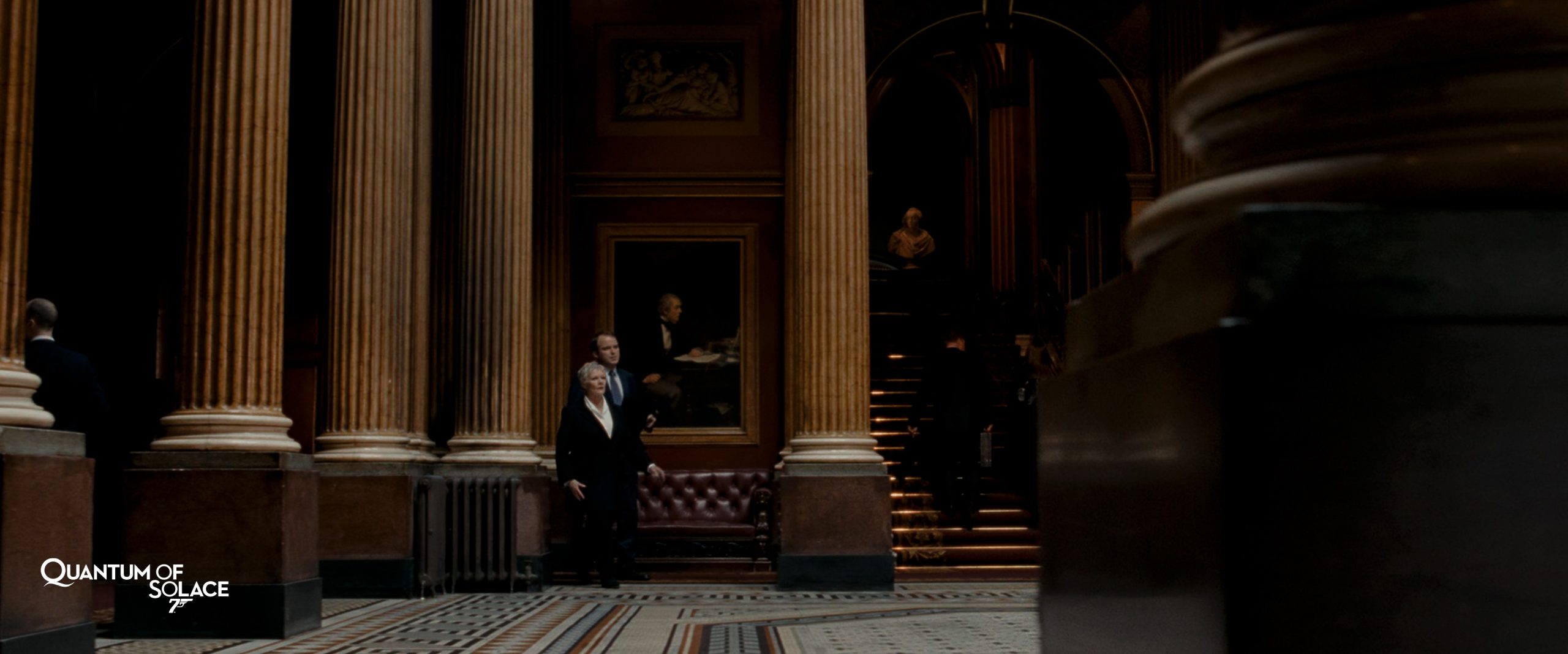 Portrait of C P Villiers portrait in Quantum of Solace (2008)
Portrait of C P Villiers portrait in Quantum of Solace (2008)
Artwork 6
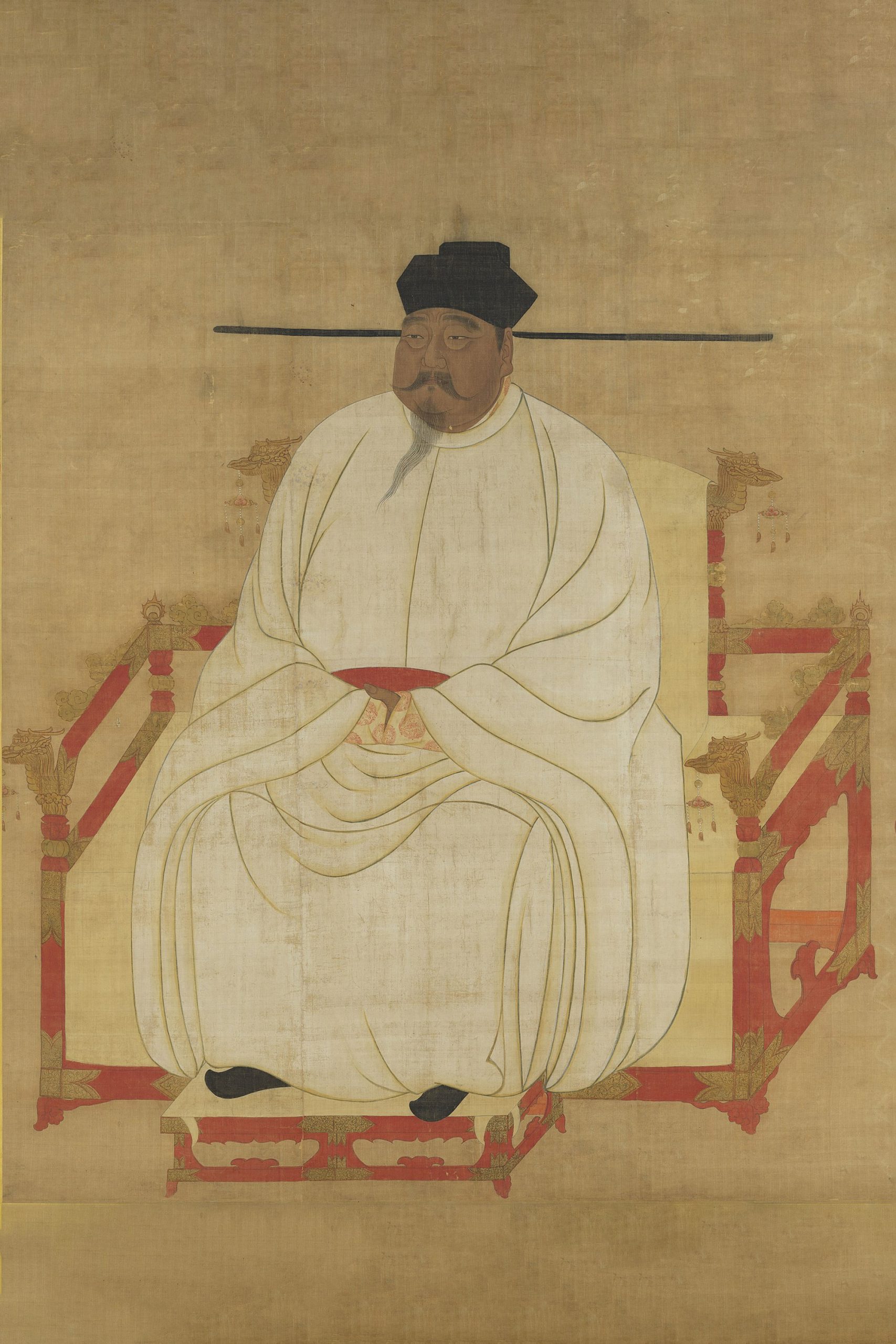
Portrait of Emperor Taizu of Song
Unknown
Emperor Taizu, born Zhao Kuangyin in 927, founded the Song Dynasty in 960, marking the beginning of medieval China’s political and cultural renaissance. A military leader, he reunified the country, establishing a stable and prosperous rule.
His reign fostered a period of economic growth and cultural advancement.The image on-screen seems to be a reprint with adjustments made to the colours of the garments and furniture from those in the ‘official’ portrait. In its first appearance, the Man with the Golden Gun (1974), the portrait hangs alongside that of the Yongle Emperor.
The Yongle Emperor, Zhu Di, ruled China from 1402 to 1424 during the Ming Dynasty. Known for moving the capital to Beijing and constructing the Forbidden City, he sponsored maritime expeditions led by Zheng He. His reign saw cultural achievements, including the compilation of the Yongle Encyclopaedia, reflecting a golden era in Chinese history.
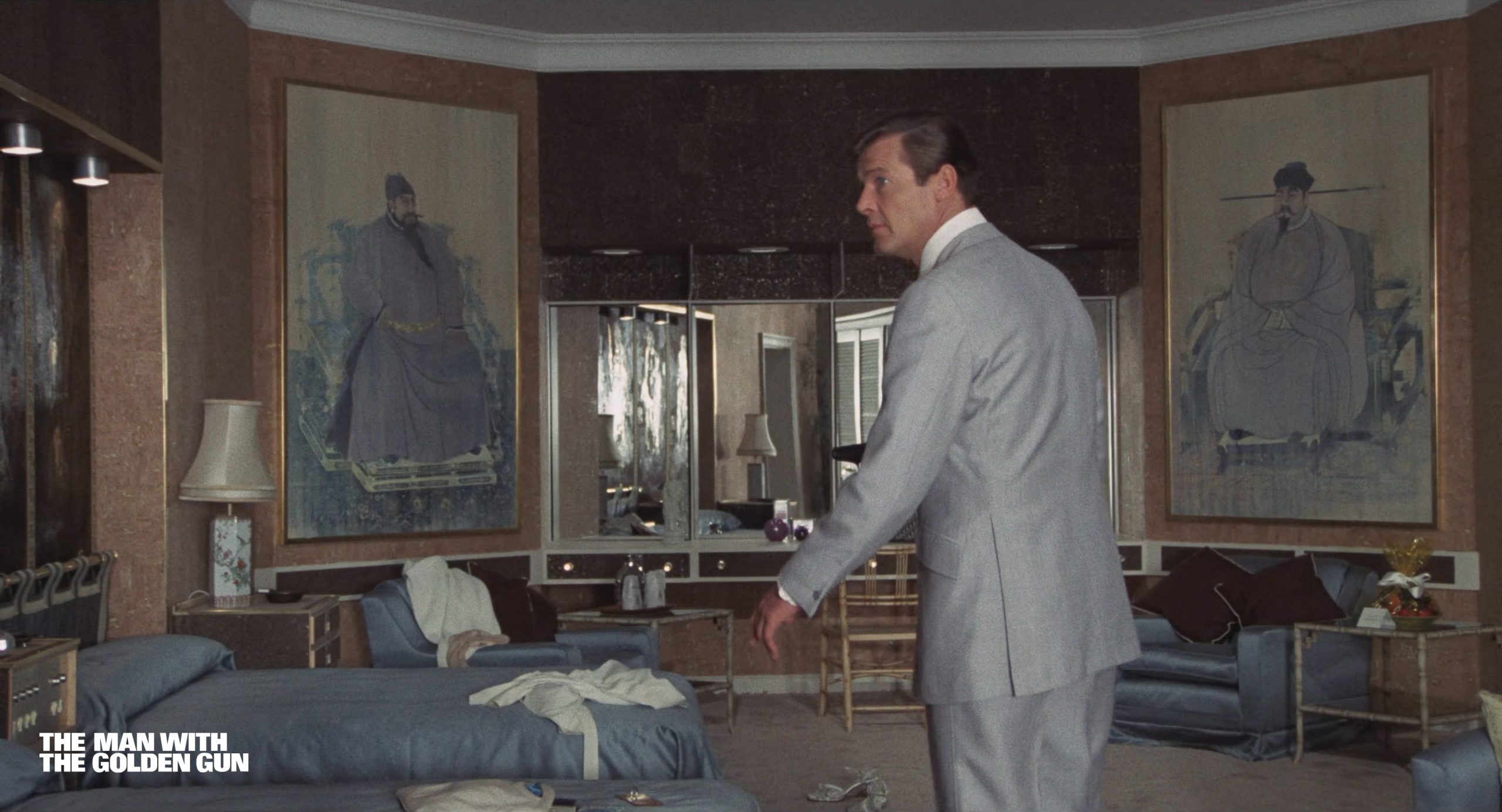 Portrait of Emperor Taizu of Song appearing in The Man with the Golden Gun (1974)
Portrait of Emperor Taizu of Song appearing in The Man with the Golden Gun (1974)
In The Man with the Golden Gun, the portraits are hanging in Andrea Anders’ hotel room in Hong Kong. 007 sneaks in, champagne bucket in hand, as Ms. Anders is in the shower (with a gun for some inexplicable reason). After a brief altercation, 007 coerces Anders to give up information about her lover, Francisco Scaramanga, before it’s off to the Bottoms Up club!
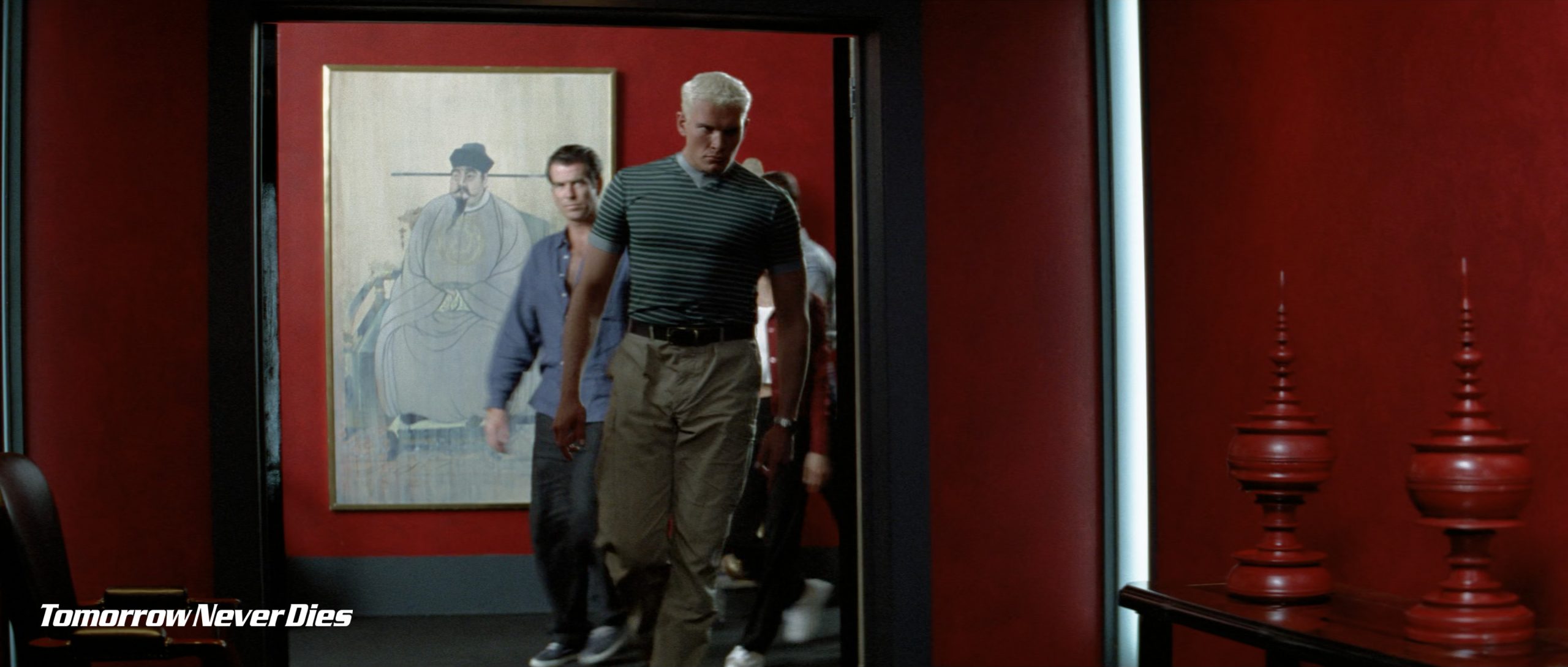 Portrait of Emperor Taizu of Song appearing in Tomorrow Never Dies (1997)
Portrait of Emperor Taizu of Song appearing in Tomorrow Never Dies (1997)
The print then reappears in 1997’s Tomorrow Never Dies. After 007 and Wai Lin dive to investigate the sunken HMS Devonshire in the South China Sea, they are captured by Stamper and escorted to the Carver Media Group’s local headquarters in Saigon (Ho Chi Minh City), Vietnam. The print can be seen behind 007 and Wei Lin as they are taken to meet Elliot Carver, who is writing their obituaries.
Artwork (00)7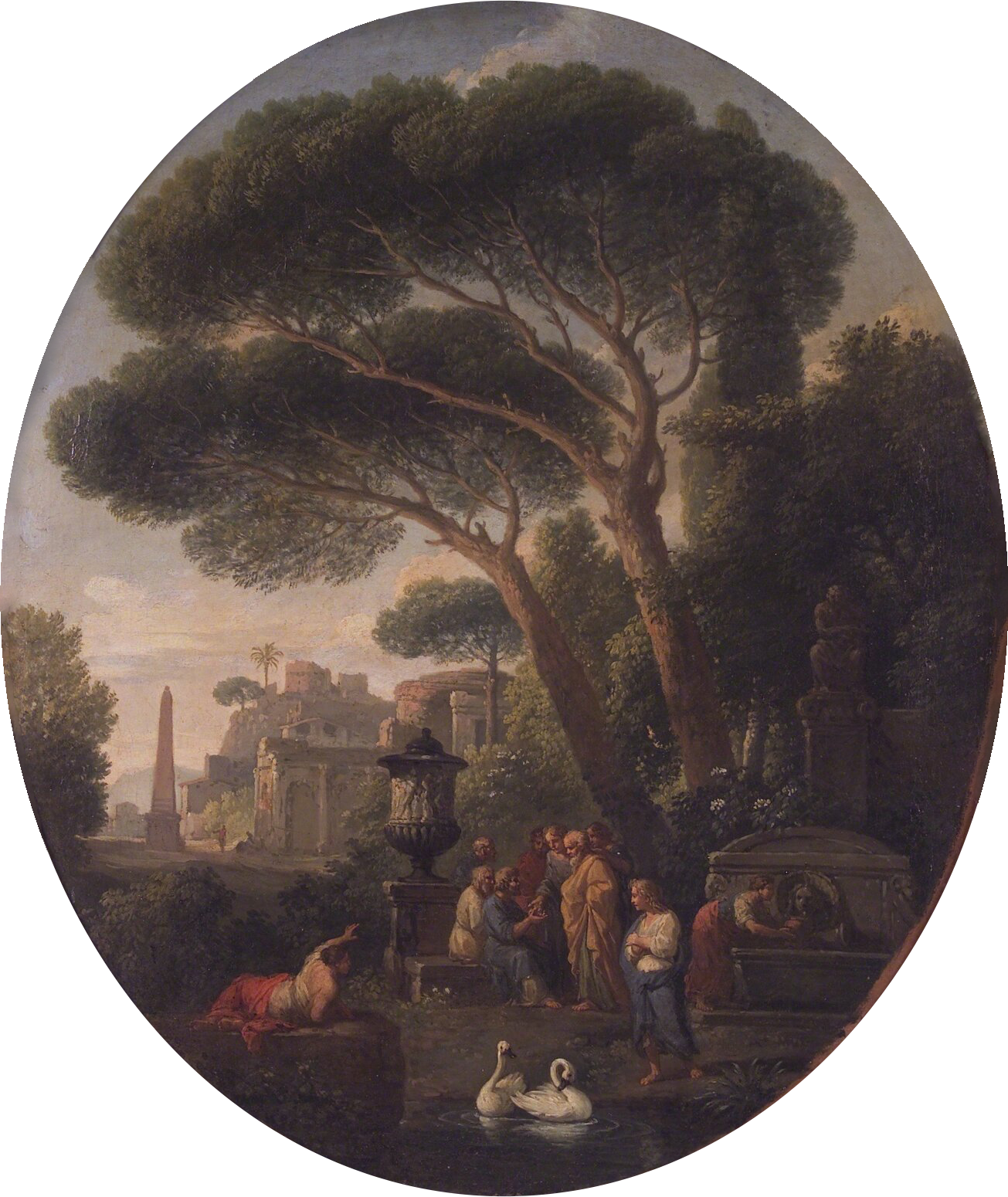
Dispute of Philosophers in a Roman Villa
Jan Frans van Bloemen, called Orizzonte (1726)
The last artwork in the list is also the most travelled, earning the right to be placed in the position of (00)7. It portrays philosophers in animated debate amid ruins by Jan Frans van Bloemen. A masterpiece of the Flemish Baroque, it showcases van Bloemen’s skill in blending landscape and genres.
The composition captures an idyllic Roman backdrop, fitting for one of the set locations within which we see it appear. The first film in the series to use this painting is On Her Majesty’s Secret Service (1969), where it is seen hanging in 007’s suite at The Hotel Palácio in Estoril, Portugal. It is seen quite prevalently throughout the fight sequence with Che-Che. The painting hangs alongside Landscape of Lazio with Shepherds and a Flock by the same artist.
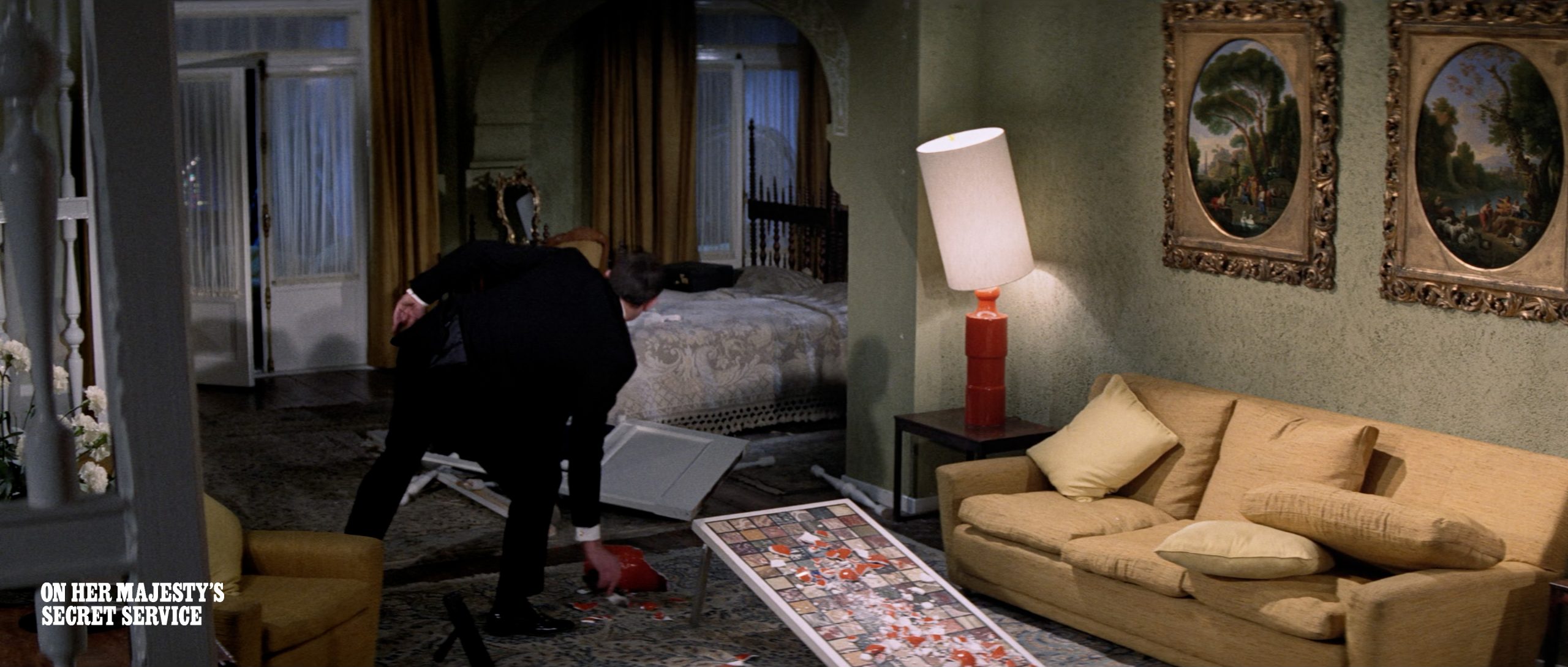 Dispute of Philosophers in a Roman Villa appearing in On Her Majesty’s Secret Service (1969)
Dispute of Philosophers in a Roman Villa appearing in On Her Majesty’s Secret Service (1969)
The painting then reappears four years later in Roger Moore’s first outing as Bond, Live and Let Die (1973). The painting has found its way across the Atlantic and is seen hanging on the walls of the hotel in New Orleans, Louisiana, where 007 is being tailored whilst Felix tries to calm Mr. Bleeker following the flying ‘lesson’ with Mrs. Bell.
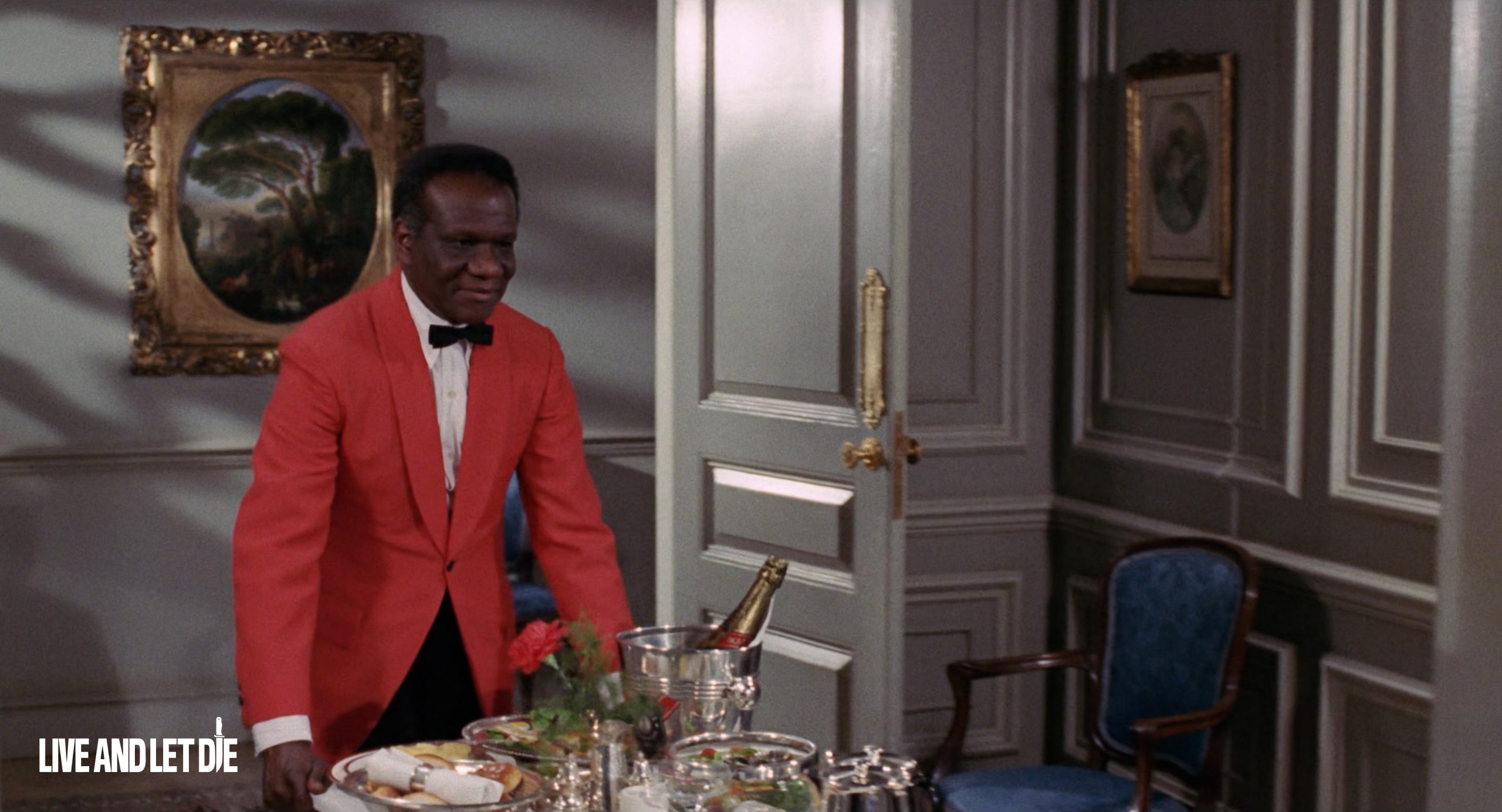 Dispute of Philosophers in a Roman Villa appearing in Live and Let Die (1973)
Dispute of Philosophers in a Roman Villa appearing in Live and Let Die (1973)
The painting is then not seen again on screen until it clocks up more air miles, making a trip back across the Atlantic to M’s home, in London, for 2006’s Casino Royale. The painting can be seen hanging behind 007 when M arrives, to discover he has broken in to gain access to her laptop.
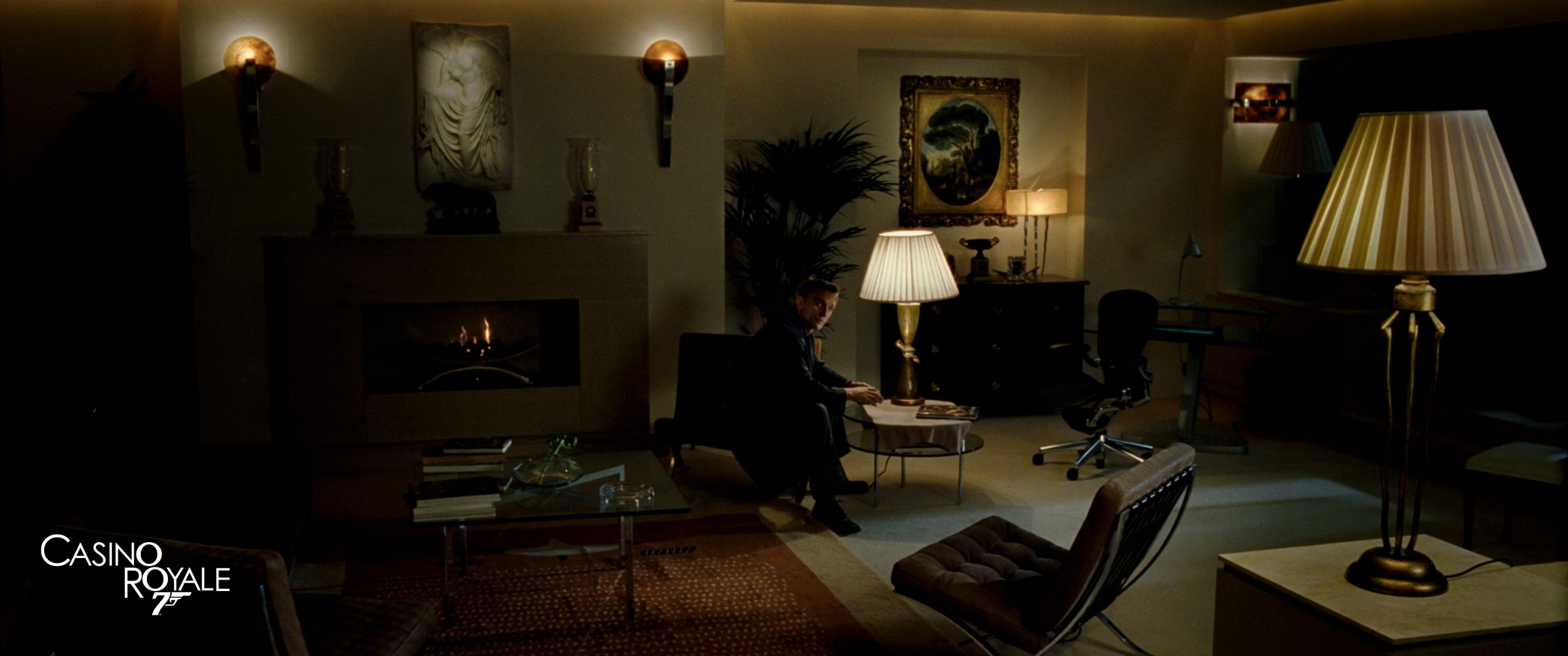 Dispute of Philosophers in a Roman Villa appearing in Casino Royale (2006)
Dispute of Philosophers in a Roman Villa appearing in Casino Royale (2006)
The painting concludes its 10,000+ mile journey in Rome, where it finally adorns the walls of, the newly widowed Lucia Sciarra’s home. It can be seen behind Donna Lucia following her tryst with 007 as he is telling her that Felix is coming to rescue her from SPECTRE.
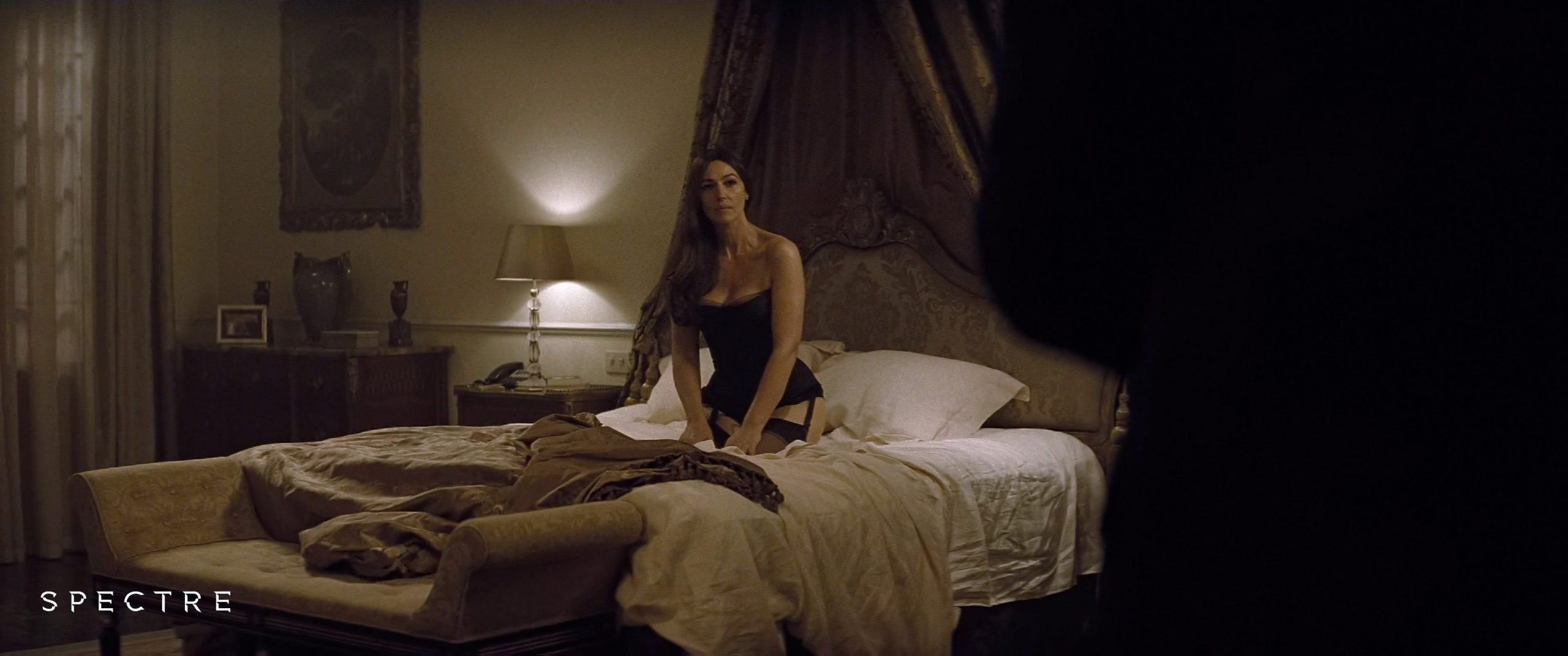 Dispute of Philosophers in a Roman Villa appearing in SPECTRE (2015)
Dispute of Philosophers in a Roman Villa appearing in SPECTRE (2015)
Fittingly this painting currently hangs in the Accademia Nazionale di San Luca, Rome. All images depicting the artworks used within are property of the respective copyright owners.

